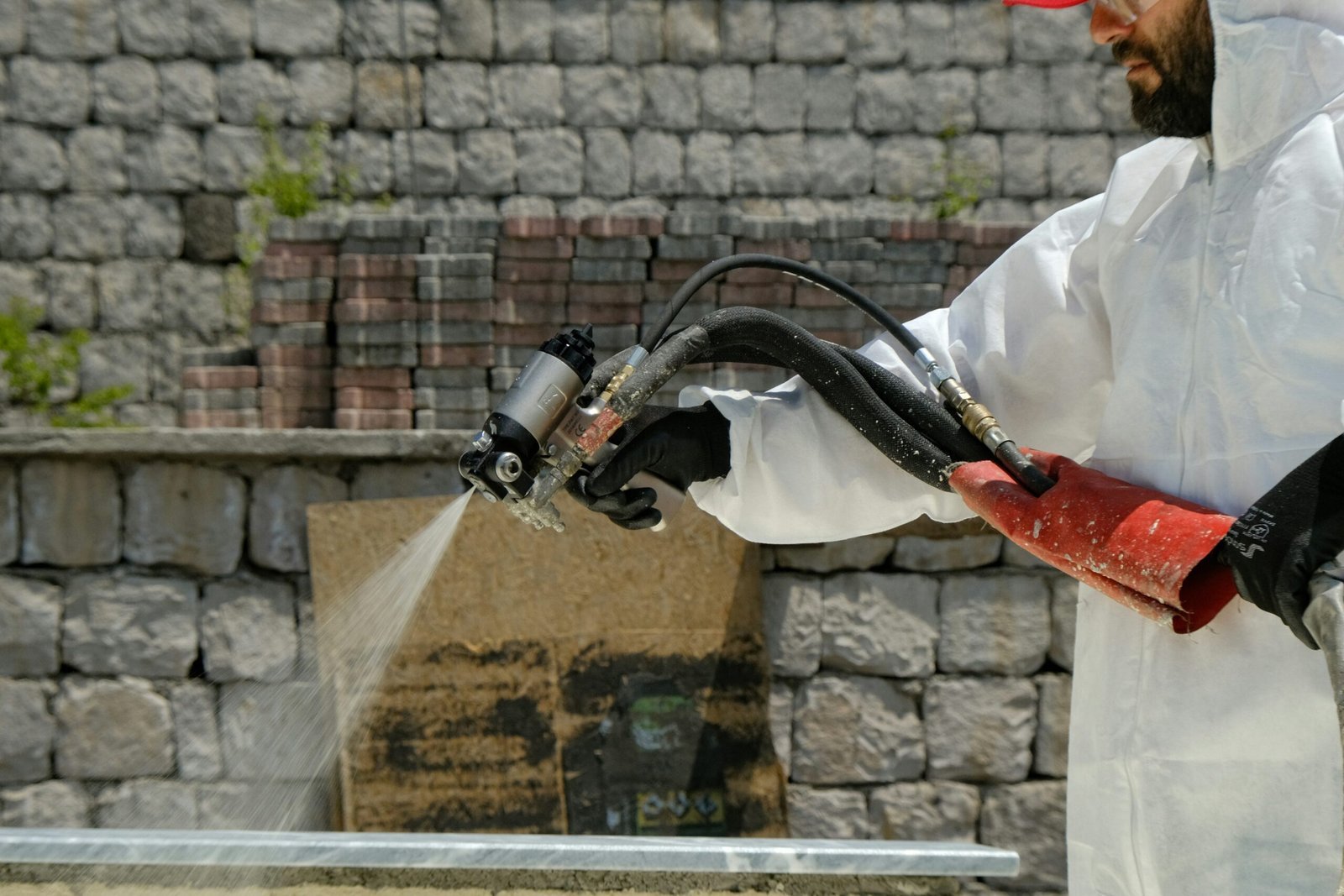Learn about the physics behind roof noises caused by thermal expansion and contraction. Discover how different roofing materials react to temperature changes and find out common causes of roof noises like popping, creaking, and cracking. Get practical tips on preventive measures and solutions to minimize roof noises and maintain your roofing system effectively.
Understanding the Physics Behind Roof Noises
When temperatures fluctuate, particularly in regions with significant seasonal changes, roofs can make various noises such as creaks, pops, and groans. These sounds are primarily the result of thermal expansion and contraction of the materials used in roofing. To understand this phenomenon, it is essential to consider the basic principles of physics that govern these processes.

Most roofing materials, be it metal, asphalt, wood, or composite, expand when heated and contract when cooled. This expansion and contraction can cause the materials to move slightly, resulting in audible sounds. For instance, during the day, the sun heats the roof, causing the materials to expand. As the temperature drops in the evening, these materials contract, often leading to noticeable noises. This is a natural and expected behavior of the materials due to their inherent physical properties.
Please, read our post and do not forget to check our YouTube channel “Grig Stamate”:
https://www.youtube.com/@GrigStamate
You will find there, thousands of designing, furnishing, and decorating ideas for your home interior and outdoors.
Allow me to mention one of them:
House Tours, #24 – Small Family Homes with Stylish and Trendy Interiors (video)
Different roofing materials react to heat in varied ways. Metal roofs, for example, are particularly prone to making noise because metal has a high coefficient of thermal expansion. This means it expands and contracts more dramatically than other materials when subjected to temperature changes. Asphalt shingles, on the other hand, are less susceptible to such pronounced expansion and contraction but can still produce noise under certain conditions, especially if they are improperly fastened or if the roof structure itself is shifting.
Wooden roofs can also be quite noisy, especially in humid climates. Wood absorbs and releases moisture, causing it to swell and shrink. This moisture-related movement, coupled with thermal expansion and contraction, can lead to a range of sounds. Composite materials, designed to mimic natural materials while offering greater durability, also expand and contract, although they often produce less noise compared to metal or wood.
Understanding the physics behind these noises helps property owners manage their expectations and take appropriate measures to mitigate any potential issues. While it may be impossible to completely eliminate roof noise, recognizing the natural behavior of roofing materials under thermal stress is the first step in addressing any concerns.
Common Types of Roof Noises and Their Causes
Homeowners often find themselves perplexed by the array of noises emanating from their roofs. These sounds can range from subtle creaks to more alarming pops and cracks. Understanding the common types of roof noises and their causes is crucial for diagnosing potential issues and ensuring the longevity of the roofing structure.
One prevalent noise type is the popping sound. This is typically caused by the expansion and contraction of metal components within the roof. As temperatures rise, metal elements such as flashing, fasteners, and even metal roofing sheets expand. Conversely, they contract when temperatures drop. This thermal movement can create popping noises, especially during rapid temperature changes.
Creaking sounds are another frequent complaint among homeowners. These noises are often linked to the wooden beams and trusses that form the roof’s framework. Wood is a natural material that responds dynamically to humidity and temperature fluctuations. As the wood absorbs moisture or dries out, it can swell or shrink, leading to creaking sounds as the beams shift slightly. This movement is usually more pronounced in older homes where the wooden components have undergone significant changes over time.
Cracking noises can be particularly worrisome, but they are often the result of the movement of roofing tiles or shingles. As the roof heats up, the materials expand, and during the cooling process, they contract. This expansion and contraction can cause the tiles or shingles to shift slightly, producing cracking noises. In some cases, these sounds can also be attributed to the settling of the roof structure, especially in new constructions where materials are still adjusting to their permanent positions.
By identifying these common types of roof noises and their causes, homeowners can better understand the factors contributing to the sounds they hear. This knowledge can aid in determining whether the noises are a normal part of the roof’s behavior or if they signal underlying issues that require professional attention.
Impact of Heat on Different Roofing Materials
Heat significantly affects the structural integrity and lifespan of various roofing materials. Understanding how different materials react to temperature fluctuations is crucial for homeowners and property managers striving to minimize heat-induced noises and maintain their roofs effectively.
Asphalt shingles, one of the most common roofing materials, are particularly sensitive to heat. When temperatures rise, asphalt shingles tend to expand. This expansion can cause the shingles to warp or crack, leading to gaps and spaces which might result in popping or creaking noises. Additionally, the constant cycle of expansion and contraction accelerates wear and tear, necessitating more frequent maintenance to prevent long-term damage.
Metal roofs, known for their durability and longevity, also experience significant thermal expansion. Metal reacts to heat by expanding and then contracting as temperatures cool. These movements can create noticeable popping sounds, especially if the metal panels are not properly fastened or if there are gaps in the installation. Despite this, metal roofs are less prone to heat damage compared to other materials, though regular inspections are still essential.
Wooden roofing materials, such as shakes or shingles, exhibit a unique response to heat. Wood naturally absorbs and releases moisture, which causes it to swell and shrink. In hot conditions, the wood dries out and contracts, potentially leading to cracks and splits. These changes can produce creaking noises as the material adjusts. Proper treatment and sealing of wooden roofs can mitigate some of these effects, but ongoing maintenance is crucial to preserve their structural integrity.
Tile roofs, including clay and concrete tiles, are resilient to high temperatures but are not immune to the effects of thermal expansion. Though tiles themselves expand and contract less than other materials, the underlayment and fasteners might still shift, causing noises. The weight and rigidity of tiles help minimize movement, but cracks and displacement can still occur over time, necessitating occasional repairs.
In conclusion, the type of roofing material plays a significant role in how a roof reacts to heat. While all materials experience some degree of expansion and contraction, understanding these behaviors can help homeowners choose the best roofing material for their climate and ensure appropriate maintenance practices to prolong the life of their roof and reduce heat-induced noises.
Preventive Measures and Solutions
Addressing roof noise caused by heat involves a multi-faceted approach that includes proper installation, adequate ventilation, and routine maintenance. Implementing these measures not only reduces the occurrence of noise but also extends the lifespan of your roofing system.
First and foremost, proper installation techniques are crucial. Ensuring that roofing materials are securely fastened can prevent them from expanding and contracting excessively, which is a common cause of noise. It is essential to follow manufacturer guidelines and industry standards during installation to minimize gaps and loose fittings that might lead to noise issues.
Ventilation plays a pivotal role in managing roof temperature and, consequently, reducing noise. A well-ventilated roof allows for better air circulation, which helps in dissipating heat more effectively. This can significantly reduce the thermal expansion and contraction of roofing materials. Homeowners should ensure that their attic spaces are equipped with sufficient intake and exhaust vents to maintain a balanced airflow.
Insulating materials can also be highly effective in mitigating roof noises. High-quality insulation reduces the amount of heat that penetrates the roof, thereby limiting the expansion and contraction of materials. Insulation not only enhances thermal performance but also acts as a sound barrier, absorbing any noise that might occur.
Routine maintenance is essential for keeping roof noise at bay. Regular inspections can help identify and address minor issues before they escalate into more significant problems. Homeowners should check for loose shingles, damaged flashing, and any gaps or cracks that could contribute to noise. Promptly addressing these issues can prevent them from worsening.
Despite taking these preventive measures, there might be instances where consulting a professional becomes necessary. If the noise persists or if there are signs of structural damage, it is advisable to seek expert advice. A professional roofer can provide a thorough assessment and recommend appropriate solutions tailored to the specific needs of your roof.
By following these practical steps, homeowners can effectively minimize roof noises caused by heat, ensuring a quieter and more durable roofing system.
Other related posts from our website:
https://howtobuildahouseblog.com/how-to-remove-moss-from-your-roof-3-effective-methods/
https://howtobuildahouseblog.com/8-tips-for-choosing-the-perfect-metal-roof-tile-for-your-home/
https://howtobuildahouseblog.com/a-comprehensive-guide-to-skylights-and-roof-lights/
Thank you so much for your attention.
Stay tuned. We will upload many other amazing posts to our website and videos onto our YouTube channel.
Thank you so much.
for your time and attention.
Best Regards
See you to another post,
Bye, Bye



No Responses